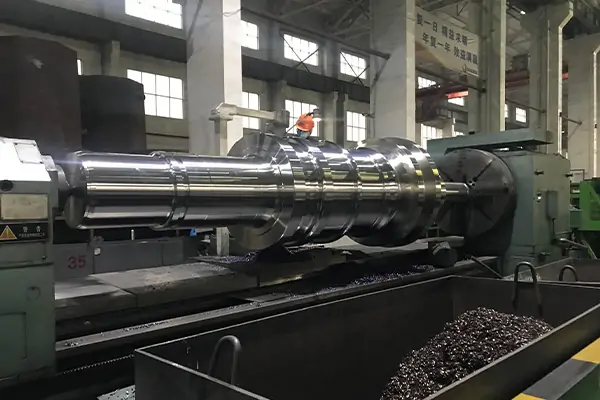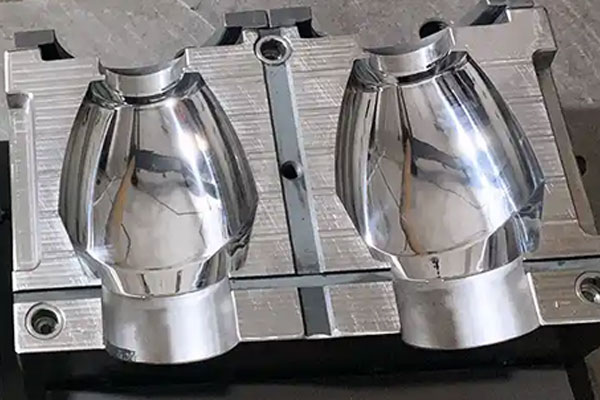Welcome to My Blog! 🌟
Before we dive into the content, I’d love for you to join me on my social media platforms. It’s where I share more insights, engage with our vibrant community, and post regular updates. Here’s how you can stay connected:
📘 Facebook: Connect with me on Facebook
Now, let’s embark on this journey together. I hope you find the content here insightful, engaging, and most importantly, valuable. Let’s explore, learn, and grow together! 🚀
Table of Contents
Introduction


When selecting materials for industrial applications, the choice between tool steel vs stainless steel can significantly impact performance, durability, and cost. Many manufacturers and engineers face challenges in determining which material best suits their needs, often leading to costly mistakes. This comprehensive guide examines four critical comparisons between tool steel vs stainless steel to help you make an informed decision.
Understanding the differences in hardness, corrosion resistance, machinability, and cost is essential for optimizing your projects. Whether you’re working in automotive, aerospace, medical, or general manufacturing, this breakdown will clarify which material excels in specific conditions.
NO 1. Composition and Material Properties: The Fundamental Differences
Decoding the Metallurgical Makeup of Tool Steel and Stainless Steel
The essential differences between tool steel vs stainless steel begin at the most fundamental level – their chemical compositions. These distinct elemental recipes lead to dramatically different material behaviors that directly impact performance in real-world applications.
Tool Steel Composition Highlights:
When examining tool steel vs stainless steel at the compositional level, tool steels feature:
- Carbon content ranging from 0.5% to 2.5% (significantly higher than stainless steels)
- Alloying elements including tungsten (up to 18%), molybdenum (up to 10%), and chromium (up to 12%)
- Vanadium additions (typically 1-5%) for grain refinement and wear resistance
- Cobalt in some high-speed steel variants for enhanced hot hardness
Common Tool Steel Grades and Their Applications:
The tool steel vs stainless steel comparison becomes more meaningful when examining specific grades:
- D2 Tool Steel:
- Composition: 1.5% C, 12% Cr, 1% Mo, 1% V
- Applications: Cold work applications including punches, dies, and forming tools
- Advantages: Excellent wear resistance and dimensional stability
- A2 Tool Steel:
- Composition: 1.0% C, 5% Cr, 1% Mo
- Applications: General purpose tooling requiring balanced toughness
- Advantages: Good combination of hardness and shock resistance
- M2 High-Speed Steel:
- Composition: 0.85% C, 4% Cr, 5% Mo, 6% W, 2% V
- Applications: High-speed cutting tools including drills and end mills
- Advantages: Maintains hardness at elevated temperatures
- H13 Hot Work Steel:
- Composition: 0.40% C, 5% Cr, 1.5% Mo, 1% V
- Applications: Die casting, extrusion, and hot forging tools
- Advantages: Superior thermal fatigue resistance
Stainless Steel Composition Characteristics:
In the tool steel vs stainless steel comparison, stainless steels feature:
- Minimum 10.5% chromium content (up to 30% in some super austenitic grades)
- Nickel additions (8-12%) in austenitic grades for improved formability
- Molybdenum (2-7%) in marine-grade alloys for pitting resistance
- Lower carbon content (typically <0.08% in corrosion-resistant grades)
Popular Stainless Steel Grades and Uses:
The tool steel vs stainless steel decision requires understanding common stainless grades:
- 304: General purpose corrosion resistance (food processing, architectural)
- 316: Superior chemical resistance (marine, pharmaceutical)
- 420: Cutlery and surgical instruments
- 17-4PH: High-strength structural applications
Microstructural Differences That Drive Performance
The crystalline structure of tool steel vs stainless steel reveals why they behave so differently:
Tool Steel Microstructure:
- Primarily martensitic with carbide precipitates
- Heat treatment creates extremely hard, wear-resistant phases
- Secondary hardening occurs during tempering
Stainless Steel Microstructure:
- Austenitic (FCC) structure in 300-series grades
- Ferritic (BCC) structure in 400-series grades
- Duplex structures in modern high-performance alloys
- Precipitation hardening in PH grades
NO 2. Hardness and Wear Resistance: Performance Under Extreme Conditions


Quantifying the Mechanical Differences
When evaluating tool steel vs stainless steel for demanding applications, hardness and wear resistance often become the deciding factors.
Comprehensive Hardness Comparison:
| Property | Tool Steel Range | Stainless Steel Range | Performance Gap |
|---|---|---|---|
| As-Quenched Hardness (HRC) | 55-68 | 20-55 | 15-48% higher |
| Tempered Hardness (HRC) | 50-65 | 30-55 | 20-40% higher |
| Hot Hardness (600°C) | 45-55 HRC | <30 HRC | 50%+ higher |
| Abrasion Resistance | Excellent | Fair to Good | 2-5x better |
Wear Mechanisms in Industrial Applications
Understanding how tool steel vs stainless steel wears differently helps predict service life:
Adhesive Wear:
- Tool steel’s hard carbides resist material transfer
- Stainless steel more prone to galling in sliding contact
Abrasive Wear:
- Tool steel maintains sharp edges 3-5x longer
- Stainless steel shows deeper grooving from abrasives
Erosive Wear:
- Tool steel better resists particle impact
- Stainless steel erodes faster in slurry applications
Impact Toughness Considerations
While tool steel leads in hardness, stainless steel often offers better toughness:
- Charpy Impact Values:
- Tool steel: 10-30 J (depends on grade and hardness)
- Stainless steel: 50-150 J (austenitic grades highest)
This makes stainless steel preferable for applications requiring:
- Shock resistance
- Cryogenic service
- Structural components
NO 3. Corrosion Resistance: When Environment Dictates Material Choice
The Science of Stainless Steel’s Corrosion Resistance
When evaluating tool steel vs stainless steel for applications exposed to corrosive environments, understanding the fundamental mechanisms of corrosion resistance becomes essential. Stainless steel’s exceptional performance in this regard stems from its unique passive oxide layer formation:
- Self-repairs when damaged
- Thickness ranges from 1-5 nm
- Contains primarily Cr₂O₃ with some Fe/Cr spinels
Tool steel’s limited corrosion resistance comes from:
- Lower chromium content (typically <12%)
- Lack of nickel in most grades
- Presence of iron carbides that create galvanic cells
Corrosion Rate Comparisons in Various Environments
| Environment | Tool Steel Corrosion Rate | Stainless Steel Corrosion Rate |
|---|---|---|
| Marine Atmosphere | 100-500 µm/year | <1 µm/year |
| Industrial Atmosphere | 50-200 µm/year | <0.5 µm/year |
| Fresh Water | 10-50 µm/year | <0.1 µm/year |
| Acidic Solutions (pH 3) | 1000+ µm/year | 1-10 µm/year |
Protection Methods for Tool Steel
When tool steel must be used in corrosive environments:
- Electroplating (hard chrome, nickel)
- Physical Vapor Deposition (TiN, TiAlN)
- Chemical Conversion Coatings
- Regular oiling/maintenance
NO 4. Machinability and Total Cost Analysis
Machining Difficulty Comparison
| Factor | Tool Steel | Stainless Steel |
|---|---|---|
| Cutting Speed | 30-50% slower | Moderate |
| Tool Wear | Very High | Moderate |
| Surface Finish | Good with effort | Excellent |
| Work Hardening | Minimal | Significant (austenitic) |
Cost Breakdown Over Product Lifecycle
| Cost Factor | Tool Steel | Stainless Steel |
|---|---|---|
| Material Cost | 5−5−20/kg | 3−3−15/kg |
| Machining Cost | 30-50% higher | Standard |
| Tooling Cost | High | Moderate |
| Heat Treatment | Required | Sometimes |
| Lifecycle Cost | Often lower | Can be higher |
Conclusion
In conclusion, when deciding between Tool Steel vs Stainless Steel, thoroughly assess your application’s core needs—prioritizing extreme wear resistance and hardness (where Tool Steel excels) or superior corrosion resistance and moderate strength (where Stainless Steel shines). For Tool Steel vs Stainless Steel comparisons, also factor in total lifecycle costs, environmental exposure, and machining feasibility to ensure the optimal Tool Steel or Stainless Steel selection balances performance longevity with cost-effectiveness.
FAQ
Q: Can tool steel match stainless steel’s corrosion resistance with special treatments?
A: While coatings and platings can improve tool steel‘s corrosion resistance, they add cost and may wear off in service. For permanent corrosion resistance, stainless steel remains superior.
Q: Which material holds tighter tolerances in precision applications?
A: Tool steel generally maintains dimensional stability better during heat treatment and machining, making it preferable for ultra-precision components.
Q: How does high-temperature performance compare?
A: Tool steel maintains its hardness and strength at elevated temperatures far better than most stainless steels, making it ideal for hot work applications.
Q: Is there a hybrid material combining both advantages?
A: Some proprietary alloys attempt to bridge the gap, but they typically compromise on either hardness or corrosion resistance. Material selection should focus on the primary performance requirement.
Q: How frequently should tool steel components be inspected in corrosive environments?
A: Depending on the environment, tool steel parts may require weekly to monthly inspection for corrosion initiation, with more frequent checks in severe conditions.

